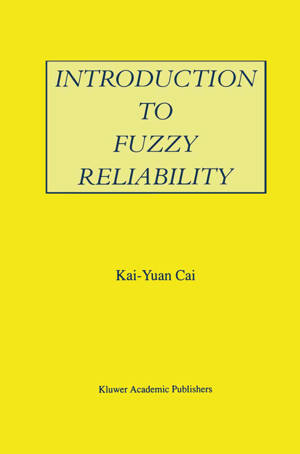
- Afhalen na 1 uur in een winkel met voorraad
- Gratis thuislevering in België vanaf € 30
- Ruim aanbod met 7 miljoen producten
- Afhalen na 1 uur in een winkel met voorraad
- Gratis thuislevering in België vanaf € 30
- Ruim aanbod met 7 miljoen producten
Zoeken
Omschrijving
Introduction to Fuzzy Reliability treats fuzzy methodology in hardware reliability and software reliability in a relatively systematic manner. The contents of this book are organized as follows. Chapter 1 places reliability engineering in the scope of a broader area, i.e. system failure engineering. Readers will find that although this book is confined to hardware and software reliability, it may be useful for other aspects of system failure engineering, like maintenance and quality control. Chapter 2 contains the elementary knowledge of fuzzy sets and possibility spaces which are required reading for the rest of this book. This chapter is included for the overall completeness of the book, but a few points (e.g. definition of conditional possibility and existence theorem of possibility space) may be new. Chapter 3 discusses how to calculate probist system reliability when the component reliabilities are represented by fuzzy numbers, and how to analyze fault trees when probabilities of basic events are fuzzy. Chapter 4 presents the basic theory of profust reliability, whereas Chapter 5 analyzes the profust reliability behavior of a number of engineering systems. Chapters 6 and 7 are devoted to probist reliability theory from two different perspectives. Chapter 8 discusses how to model software reliability behavior by using fuzzy methodology. Chapter 9 includes a number of mathematical problems which are raised by applications of fuzzy methodology in hardware and software reliability, but may be important for fuzzy set and possibility theories.
Specificaties
Betrokkenen
- Auteur(s):
- Uitgeverij:
Inhoud
- Aantal bladzijden:
- 311
- Taal:
- Engels
- Reeks:
- Reeksnummer:
- nr. 363
Eigenschappen
- Productcode (EAN):
- 9781461286080
- Verschijningsdatum:
- 27/09/2011
- Uitvoering:
- Paperback
- Formaat:
- Trade paperback (VS)
- Afmetingen:
- 156 mm x 234 mm
- Gewicht:
- 467 g

Alleen bij Standaard Boekhandel
+ 549 punten op je klantenkaart van Standaard Boekhandel
Beoordelingen
We publiceren alleen reviews die voldoen aan de voorwaarden voor reviews. Bekijk onze voorwaarden voor reviews.











